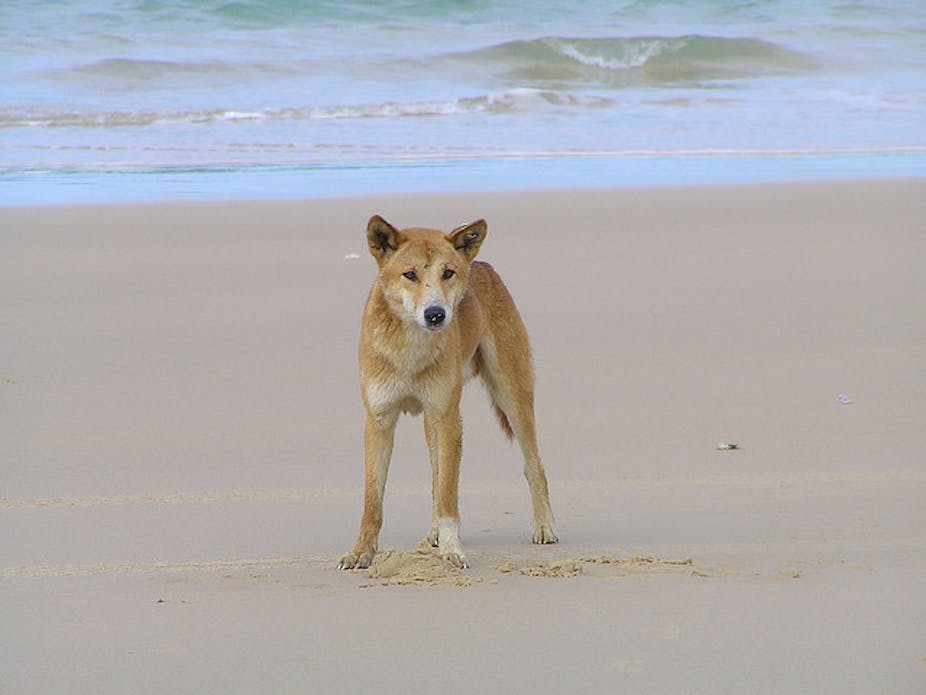A new study of DNA has found that Indian people may have come to Australia around 4000 years ago, an event possibly linked to the first appearance of the dingo.
Australia was first populated around 40,000 years ago and it was once thought Aboriginal Australians had limited contact with the outside world until the arrival of Europeans.
However, an international research team examining genotyping data from Aboriginal Australians, New Guineans, island Southeast Asians and Indians found ancient association between Australia, New Guinea, and the Mamanwa group from the Philippines.
“We also detect a signal indicative of substantial gene flow between the Indian populations and Australia well before European contact, contrary to the prevailing view that there was no contact between Australia and the rest of the world. We estimate this gene flow to have occurred during the Holocene, 4,230 years ago,” the researchers said in a paper titled ‘Genome-wide data substantiate Holocene gene flow from India to Australia’ and published in the journal PNAS.
“This is also approximately when changes in tool technology, food processing, and the dingo appear in the Australian archaeological record, suggesting that these may be related to the migration from India.”
The researchers said that around the time the Indian visitors arrived on Australia’s shores, stone tools called microliths began appearing for the first time and new plant processing techniques were used.
“It has been a matter of controversy as to whether these changes occurred in situ or reflect contact with people from outside Australia or some combination of both factors. However, the dingo also first appears in the fossil record at this time and must have come from outside Australia. Although dingo mtDNA appears to have a Southeast Asian origin, morphologically, the dingo most closely resembles Indian dogs,” the researchers said.
Lead author Dr Irina Pugach, from Germany’s Max Planck Institute for Evolutionary Anthropology, said it was not clear how many people came from India to Australia.
“It could have been just a very small group,” she said.
“We don’t claim the dingo and changes in stone tool technologies came with these migrants. We suggest that maybe they accompanied the people.”
Professor Alan Cooper, director of the Australian Centre for Ancient DNA at the University of Adelaide, said the research team’s discovery of “a previously unsuspected episode of gene flow with populations from mainland India, estimated to take place around 4,200 years ago… coincides with significant changes in the Aboriginal archaeological record, around 4000 to 5000 years ago.”
“It does not necessarily indicate direct contact with mainland India. For example it could be via populations elsewhere whose original source was mainland India,” said Professor Cooper, who was not involved in the research.
“It would be interesting to compare this theory with the Aboriginal language patterns, where one group (Pama-Nyungan) is thought to have recently spread around all parts of Australia apart from the big end, where amazing diversity remains. The timing of this language movement is thought to also be around 4000 - 5000 years ago, so this is starting to be a very important time in Australian history.”
Professor Maciej Henneberg, Wood Jones Professor of Anthropological and Comparative Anatomy at the University of Adelaide, said the research team’s findings were “logical, though based on a limited sample of genetic material.”
“There are some indications of similarities to Indian Subcontinent in marital customs of Aboriginal Australians as well as in their morphology,” said Professor Henneberg, who was not involved in the original paper.
“It is quite wrong to simplistically assume that Australia was discovered by people only once some 40,000 years ago. Such an assumption denies intelligent behaviour to people in the South and the East of Asia and its fringes as well as to Aboriginal Australians. People were capable of sea travel and exploration for many hundreds of thousands of years and thus should have come to Australia many times during the last 50,000 years or so.”
It is equally simplistic to assume that everyone came out of Africa once some 100,000 years ago, he said.
“Australian people were, for tens of thousands of years, a part of the human population of the world exchanging both genes and cultural information with their neighbours.”

